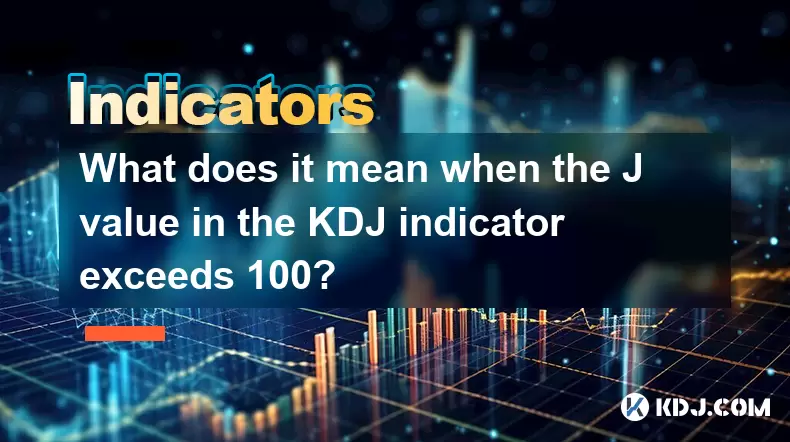-
 Bitcoin
Bitcoin $114600
-0.61% -
 Ethereum
Ethereum $4748
0.55% -
 XRP
XRP $3.011
-0.88% -
 Tether USDt
Tether USDt $0.9998
0.01% -
 BNB
BNB $860.2
-3.44% -
 Solana
Solana $203.7
0.53% -
 USDC
USDC $0.9999
-0.01% -
 TRON
TRON $0.3655
0.76% -
 Dogecoin
Dogecoin $0.2295
-3.41% -
 Cardano
Cardano $0.8945
-2.14% -
 Chainlink
Chainlink $25.54
-0.83% -
 Hyperliquid
Hyperliquid $43.53
-0.72% -
 Sui
Sui $3.623
-3.18% -
 Stellar
Stellar $0.4057
-1.44% -
 Ethena USDe
Ethena USDe $1.000
-0.01% -
 Bitcoin Cash
Bitcoin Cash $595.4
1.68% -
 Avalanche
Avalanche $25.04
-4.28% -
 Hedera
Hedera $0.2444
-2.06% -
 Litecoin
Litecoin $118.7
-2.38% -
 UNUS SED LEO
UNUS SED LEO $9.583
0.01% -
 Toncoin
Toncoin $3.313
-1.22% -
 Shiba Inu
Shiba Inu $0.00001280
-2.96% -
 Uniswap
Uniswap $10.93
-2.67% -
 Polkadot
Polkadot $4.042
-2.65% -
 Dai
Dai $0.9999
0.00% -
 Bitget Token
Bitget Token $4.658
-1.75% -
 Cronos
Cronos $0.1573
1.68% -
 Aave
Aave $346.4
-3.15% -
 Monero
Monero $269.6
3.35% -
 Ethena
Ethena $0.6947
-7.13%
What does it mean when the J value in the KDJ indicator exceeds 100?
When the KDJ's J line exceeds 100, it signals strong bullish momentum in crypto markets, often seen during sharp rallies—especially in volatile altcoins—though it doesn't guarantee an immediate reversal and should be confirmed with volume, trend analysis, and other indicators like RSI or MACD to avoid false signals.
Aug 12, 2025 at 12:00 pm

Understanding the KDJ Indicator and Its Components
The KDJ indicator is a momentum oscillator widely used in technical analysis within the cryptocurrency trading community. It consists of three lines: the %K line, the %D line, and the %J line. The %K line represents the current closing price relative to the price range over a specified period, typically 9 periods. The %D line is a moving average of the %K line, usually a 3-period simple moving average. The %J line, which is derived from the formula J = 3 × %K – 2 × %D, reflects the divergence between %K and %D, amplifying their movements and often acting as a leading signal.
When traders observe the J value exceeding 100, it signifies an extreme condition in market momentum. This value is not bounded like %K and %D, which are typically confined between 0 and 100. Because the J line is a weighted calculation, it can extend beyond these limits, indicating overbought territory when above 100 and oversold territory when below 0. In the context of cryptocurrency markets, which are highly volatile, such extremes occur more frequently than in traditional markets.
Implications of J > 100 in Cryptocurrency Trading
A J value greater than 100 suggests that the asset is experiencing strong upward momentum, potentially to an unsustainable level. This condition often arises during sharp price rallies, especially in altcoins or meme tokens that are prone to pump-and-dump cycles. When the J line surges past 100, it reflects that the %K line is significantly higher than the %D line, indicating accelerated buying pressure.
However, such a reading does not automatically signal a reversal. In trending markets, particularly strong bullish trends in cryptocurrencies like Bitcoin or Ethereum, the J line can remain above 100 for extended periods. Traders must assess whether the market is in a trending phase or a ranging phase. In a strong uptrend, a high J value may confirm trend strength rather than imminent reversal. Conversely, in a sideways or choppy market, a J > 100 may warn of an impending pullback.
How to Calculate and Monitor the J Value
To understand when the J value exceeds 100, one must first compute the KDJ values. The steps are as follows:
Calculate the %K using the formula:
%K = (Current Close – Lowest Low) / (Highest High – Lowest Low) × 100
(Lowest Low and Highest High are measured over the last 9 periods)Smooth %K to get %D:
%D = 3-period simple moving average of %KDerive %J:
%J = 3 × %K – 2 × %D
Once the %J is calculated, it can be plotted on the chart alongside %K and %D. Most trading platforms, such as Binance, TradingView, or MetaTrader, offer built-in KDJ indicators. To access this on TradingView:
- Open the chart of the desired cryptocurrency pair
- Click on “Indicators” at the top
- Search for “KDJ” in the indicator search bar
- Apply the indicator and locate the J line in the sub-window
Ensure the settings are default (9,3,3) unless customizing for specific strategies. Monitor the J line closely when it approaches or exceeds 100, noting the corresponding price action and volume.
Strategic Responses to J > 100 Readings
When the J line crosses above 100, traders have several strategic options depending on their risk profile and market context. The following actions can be considered:
Watch for divergence: If the price makes a new high but the J line fails to surpass its previous peak, this bearish divergence may signal weakening momentum.
Wait for J to roll over: Instead of exiting immediately, some traders wait for the J line to turn downward from above 100, which may confirm a short-term top.
Combine with support/resistance levels: A J > 100 near a known resistance zone increases the likelihood of a reversal.
Use volume confirmation: A spike in trading volume during the J > 100 phase may indicate strong conviction, reducing the chance of an immediate reversal.
Apply on multiple timeframes: Check the J value on higher timeframes (e.g., 4-hour or daily) to determine if the signal aligns across scales.
It is crucial to avoid acting on the J line in isolation. Pairing it with moving averages, RSI, or MACD enhances signal reliability. For instance, if RSI is also above 70 and MACD shows a bearish crossover, the case for a pullback strengthens.
Common Misinterpretations of J > 100
A frequent mistake is assuming that J > 100 always means “sell now.” In reality, this reading can persist during strong bull runs. For example, during the 2021 altcoin season, many tokens saw J values soar to 150 or higher without immediate corrections. Traders who shorted based solely on this signal faced significant losses.
Another misconception is ignoring the timeframe dependency. On a 5-minute chart, J > 100 may occur dozens of times daily due to volatility, whereas on a daily chart, it is a rarer and more significant event. Context matters.
Additionally, some traders confuse the J line with the stochastic oscillator’s %D line. Remember, the J line is an extrapolation, not a smoothed average, and its volatility requires careful interpretation.
Frequently Asked Questions
Can the J value go above 150 or even 200?
Yes, the J value is not capped and can theoretically reach any level. In highly volatile crypto markets, readings above 150 are possible during extreme pumps. This reflects intense speculative buying but does not guarantee a reversal.
Does J > 100 have the same meaning on all cryptocurrencies?
While the mathematical interpretation remains consistent, the behavior varies by asset. Major coins like Bitcoin may show more reliable signals due to higher liquidity, whereas low-cap altcoins can exhibit erratic J line movements due to manipulation or low volume.
Should I reset the KDJ settings if J stays above 100 too long?
Adjusting the parameters (e.g., from 9,3,3 to 14,3,3) may smooth the indicator, but it's better to keep standard settings for consistency. Instead, use additional filters like trendlines or volume to refine entries.
Is J > 100 more reliable on spot or futures markets?
The indicator works on both, but futures markets often show exaggerated J values due to leverage-driven moves. In such cases, combining J line analysis with funding rates and open interest improves decision-making.
Disclaimer:info@kdj.com
The information provided is not trading advice. kdj.com does not assume any responsibility for any investments made based on the information provided in this article. Cryptocurrencies are highly volatile and it is highly recommended that you invest with caution after thorough research!
If you believe that the content used on this website infringes your copyright, please contact us immediately (info@kdj.com) and we will delete it promptly.
- Crypto Crossroads: Dogecoin, Stellar, and the Search for 2025's Top Coin
- 2025-08-24 19:25:32
- Bitcoin Price Swings, BTC News & Remittix: What's Hot Now?
- 2025-08-24 18:45:35
- Cryptos, Market Cap, 2025 Potential: Spotting the Next Big Thing
- 2025-08-24 16:45:35
- Shiba Inu vs. Layer Brett: Price Prediction and the Meme Coin Evolution
- 2025-08-24 17:05:29
- Dogecoin Price Prediction: Will DOGE Bark or Bite?
- 2025-08-24 17:45:26
- XRP Price: Analyst Prediction of $7-$8 in Few Weeks?
- 2025-08-24 17:45:26
Related knowledge

What does it mean when the +DI and -DI cross frequently in the DMI indicator but the ADX is flattening?
Aug 11,2025 at 03:15am
Understanding the DMI Indicator ComponentsThe Directional Movement Index (DMI) is a technical analysis tool composed of three lines: the +DI (Positive...

What does the sudden appearance of a "dark cloud cover" candlestick pattern during an uptrend indicate?
Aug 13,2025 at 11:35am
Understanding the 'Dark Cloud Cover' Candlestick PatternThe dark cloud cover is a bearish reversal pattern in technical analysis that typically appear...

What does it mean when the moving average, MACD, and RSI all send buy signals simultaneously?
Aug 11,2025 at 01:42pm
Understanding the Convergence of Technical IndicatorsWhen the moving average, MACD, and RSI all generate buy signals at the same time, traders interpr...

What does it mean when both the KDJ indicator and the RSI show overbought signals simultaneously?
Aug 13,2025 at 11:35am
Understanding the KDJ Indicator in Cryptocurrency TradingThe KDJ indicator is a momentum oscillator derived from the Stochastic Oscillator, widely use...

What does it mean when the price is trading above the SAR indicator but the red dots are densely packed?
Aug 09,2025 at 11:49pm
Understanding the SAR Indicator and Its Visual SignalsThe SAR (Parabolic Stop and Reverse) indicator is a technical analysis tool used primarily to de...

What does it mean when the candlestick chart forms a "Morning Star" but trading volume is sluggish?
Aug 12,2025 at 06:28pm
Understanding the Morning Star Candlestick PatternThe Morning Star is a three-candle bullish reversal pattern commonly observed in cryptocurrency pric...

What does it mean when the +DI and -DI cross frequently in the DMI indicator but the ADX is flattening?
Aug 11,2025 at 03:15am
Understanding the DMI Indicator ComponentsThe Directional Movement Index (DMI) is a technical analysis tool composed of three lines: the +DI (Positive...

What does the sudden appearance of a "dark cloud cover" candlestick pattern during an uptrend indicate?
Aug 13,2025 at 11:35am
Understanding the 'Dark Cloud Cover' Candlestick PatternThe dark cloud cover is a bearish reversal pattern in technical analysis that typically appear...

What does it mean when the moving average, MACD, and RSI all send buy signals simultaneously?
Aug 11,2025 at 01:42pm
Understanding the Convergence of Technical IndicatorsWhen the moving average, MACD, and RSI all generate buy signals at the same time, traders interpr...

What does it mean when both the KDJ indicator and the RSI show overbought signals simultaneously?
Aug 13,2025 at 11:35am
Understanding the KDJ Indicator in Cryptocurrency TradingThe KDJ indicator is a momentum oscillator derived from the Stochastic Oscillator, widely use...

What does it mean when the price is trading above the SAR indicator but the red dots are densely packed?
Aug 09,2025 at 11:49pm
Understanding the SAR Indicator and Its Visual SignalsThe SAR (Parabolic Stop and Reverse) indicator is a technical analysis tool used primarily to de...

What does it mean when the candlestick chart forms a "Morning Star" but trading volume is sluggish?
Aug 12,2025 at 06:28pm
Understanding the Morning Star Candlestick PatternThe Morning Star is a three-candle bullish reversal pattern commonly observed in cryptocurrency pric...
See all articles

























































































